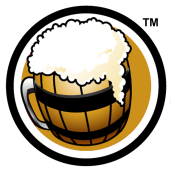Hops
|
Amount
|
Variety
|
Cost
|
Type
|
AA
|
Use
|
Time
|
IBU
|
Bill %
|
|
1 oz |
Aramis1 oz Aramis Hops |
|
Pellet |
8 |
Boil
|
60 min |
29.92 |
100% |
|
1 oz
/ $ 0.00
|
Hops Summary
|
Amount
|
Variety
|
Cost
|
IBU
|
Bill %
|
|
1 oz |
Aramis (Pellet) 0.99999999771257 oz Aramis (Pellet) Hops |
|
29.92 |
100% |
|
1 oz
/ $ 0.00
|
Mash Guidelines
|
Amount
|
Description
|
Type
|
Start Temp
|
Target Temp
|
Time
|
|
4.18 gal |
Single Infusion |
Infusion |
-- |
152 °F |
90 min |
|
5.16 gal |
Batch Sparge |
Sparge |
-- |
170 °F |
5 min |
Starting Mash Thickness:
1.5 qt/lb
|
Target Water Profile
Balanced Profile
| Ca+2 |
Mg+2 |
Na+ |
Cl- |
SO4-2 |
HCO3- |
|
80 |
5 |
25 |
75 |
80 |
100 |
Rice Hulls:
Add 1lb for every 5 lbs of malt to help with heat distribution.
Pilsner Malt:
Protein rest (122-131F 15 min)
De-Bittered Black:
Add after mash-out, during vorlauf.
Cane Sugar:
Add to boil kettle.
Step Mash
122-131 10-20 min
142-146
154-162
Add Cane Sugar to boil kettle.
Cold steep Black malt.
Cold steep with no boil
Mixed with cold water and left at room temperature for a full day
Add to wort in fermenter
As fermentation begins to slow, raise temperature 1◦F per day until reaching 70◦F.
Cellar for at least 3 months (longer is even better). |
|
Mash Chemistry and Brewing Water Calculator
|
Notes
Overall Impression:
A strong, malt-accentuated, lagered artisanal beer with a range of malt flavors appropriate for the color. All of them are malty yet dry, with clean flavors and a smooth character.
Aroma:
Prominent malty sweetness, often with a complex, light to moderate intensity toasty-bready-rich malt character. Low to moderate esters. Little to no hop aroma (may be a bit spicy, peppery, or herbal). Paler versions will still be malty but will lack richer, deeper aromatics and may have a bit more hops. Generally, quite clean although stronger versions may have a light, spicy alcohol note as it warms.
Appearance:
Three main variations exist (blond, amber and brown), so color can range from golden-blonde to reddish-bronze to chestnut brown. Clarity is brilliant to fair, although haze is not unexpected in this type of often unfiltered beer. Well-formed head, generally white to off-white (varies by beer color), average persistence.
Flavor:
Medium to high malt flavor often with a toasty-rich, biscuity, toffee-like or light caramel-sweet character. Malt flavors and complexity tend to increase with beer color. Low to moderate esters and alcohol flavors. Medium-low hop bitterness provides some support, but the balance is always tilted toward the malt. Darker versions will have more of an initial malty-sweet impression than paler versions, but all should be malty in the palate and finish. The malt flavor lasts into the finish, which is medium-dry to dry, never cloying. Low to no hop flavor (spicy, peppery, or herbal), although paler versions can have slightly higher levels of herbal or spicy hop flavor (which can also come from the yeast). Smooth, well-lagered character, even if made with ale yeast. Aftertaste of malt (character appropriate for the color) with some dryness and light alcohol.
Mouthfeel:
Medium to medium-light (lean) body, often with a smooth, creamy-silky character. Moderate to high carbonation. Moderate alcohol warming, but should be very smooth and never hot.
Comments:
Three main variations are included in the style: the brown (brune), the blond (blonde), and the amber (ambrée). The darker versions will have more malt character, while the paler versions can have more hops (but still are malt-focused beers). A related style is Bière de Mars, which is brewed in March (Mars) for present use and will not age as well. Attenuation rates are in the 80-85% range. Some fuller-bodied examples exist, but these are somewhat rare. Age and oxidation in imports often increases fruitiness, caramel flavors, and adds corked and musty notes; these are all signs of mishandling, not characteristic elements of the style.
History:
Name literally means “beer which has been kept or lagered.” A traditional artisanal ale from Northern France brewed in early spring and kept in cold cellars for consumption in warmer weather. It is now brewed year-round.
Characteristic Ingredients:
The “cellar” character commonly described in literature is more of a feature of mishandled commercial exports than fresh, authentic products. The somewhat moldy character comes from the corks and/or oxidation in commercial versions, and is incorrectly identified as “musty” or “cellar-like.” Base malts vary by beer color, but usually include pale, Vienna and Munich types. Darker versions will have richer malt complexity and sweetness from crystal-type malts. Sugar may be used to add flavor and aid in the dry finish. Lager or ale yeast fermented at cool ale temperatures, followed by long cold conditioning. Floral, herbal or spicy continental hops.
Style Comparison:
Related to the Belgian Saison style, the main difference is that the Bière de Garde is rounder, richer, malt-focused, and lacks the spicy, bitter character of a Saison.
Entry Instructions:
Entrant must specify blond, amber, or brown bière de garde. If no color is specified, the judge should attempt to judge based on initial observation, expecting a malt flavor and balance that matches the color.
Vital Statistics:
OG: 1.060 – 1.080
FG: 1.008 – 1.016
IBUs: 18 – 28
SRM: 6 – 19
ABV: 6.0 – 8.5%
Commercial Examples:
Ch’Ti (brown and blond), Jenlain (amber and blond), La Choulette (all 3 versions), St. Amand (brown), Saint Sylvestre 3 Monts (blond), Russian River Perdition
Tags:
high-strength, pale-color, amber-color, any-fermentation, lagered, western-Europe, traditional-style, amber-ale-family, malty

Last Updated and Sharing

- Public: Yup, Shared
- Last Updated: 2019-10-29 21:50 UTC
For quick copying and pasting to a text based forum or email.
Click the Download as HTML file button below.
Recipe costs can be adjusted by changing the batch size. They won't be saved but will give you an idea of costs if your final yield was different.
|
Cost $ |
Cost % |
| Fermentables |
$ |
|
Steeping Grains
(Extract Only) |
$ |
|
| Hops |
$ |
|
| Yeast |
$ |
|
| Other |
$ |
|
| Cost Per Barrel |
$ 0.00 |
|
| Cost Per Pint |
$ 0.00 |
|
| Total Cost |
$ 0.00 |
|
Discussion about this recipe:
